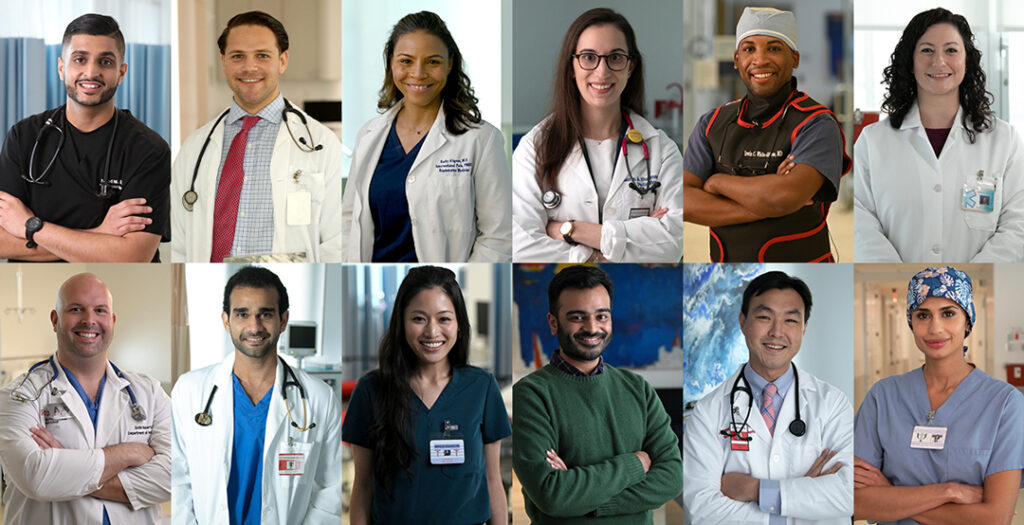If you are on the path to becoming a doctor, you may have some questions about what exactly the journey to becoming a physician entails. These might include:
How many years does it take to become a doctor? More specifically, how long is medical school? And when do students take licensing exams?
This medical education timeline, even for International Medical Students is designed to put everything in perspective. It can help you focus on major milestones that are worth celebrating along the way.
How long is medical school?
No matter which MD program you choose to attend, this guide can help you map out your journey from medical student to resident physician. Below the graphic, you’ll find more information on these steps to becoming a doctor.

How many years does it take to become a doctor? Exploring the typical path
The journey to becoming a practicing doctor isn’t over until after you’ve completed residency. However, it’s a good idea to focus on the typical four years of medical school program for now because the majority of physicians will follow a similar path.
First year of medical school
The beginning of medical school is both exciting and busy. Near the beginning of your education, you’ll participate in a white coat ceremony with your classmates to celebrate entering the medical profession. Once classes begin, you should work to develop good study habits to better retain all the material.

As you continue your first year, don’t forget about getting involved in student organizations or other extracurricular activities that appeal to you. It’s also wise to focus on your professional development and begin exploring different medical specialties. You might even find it useful to start working with your medical school’s career services department to make sure that you’re on track.
Second year of medical school
Your second year of medical school is a good time to start considering not only where your interests lie but also what it takes to pursue different medical specialties. The National Resident Matching Program (NRMP) says specialty competitiveness can be measured by the overall percentage of postgraduate positions filled for specialties that offer a minimum of 30 positions. You can review the 2020 results to see how different fields stack up.
Continuing your study habits will prove essential as you begin preparing for the United States Medical Licensing Examination (USMLE) Step 1, which you’ll take near the end of your second year. Your performance on this exam is the most important criteria residency program directors scrutinize when considering applicants. If you’ll be applying to Canadian residency positions, you’ll want to take the Medical Council of Canada Qualifying Examination (MCCQE) Part 1 as well as the National Assessment Collaboration Examination (NAC). It’s also important to begin researching the residency application process and working on composing your curriculum vitae (CV).
Third year of medical school
You’re now ready to begin clinical training to apply what you’ve learned in classes to real life by assisting in diagnoses, physical examinations, and interpreting test results. This is also the time you should begin looking into test dates for the USMLE Step 2.
As you rotate through different specialties, make note of especially impactful instructors who could eventually write you a letter of recommendation for residency applications. The Electronic Residency Application Services (ERAS) opens at the beginning of June, so it’s a good idea to start gathering materials sooner rather than later. While the Canadian Resident Matching Service (CaRMS) doesn’t become available until the fall, it’s still wise to prepare. In addition to letters, your application will include a personal statement, your licensing exam performance, your program selection, and some personal information.
Fourth year of medical school
The final year of an MD program is a busy time. As you continue clinical training, you’ll also go through the residency application and matching process. You can begin submitting applications in September using ERAS or the following January using CaRMS, and it’s better to be on the early side given that interviews are offered on a rolling basis. Plan to attend every interview you’re offered—it’s good practice, and you never know whether a program will be high on your ranked order of residency programs until you experience it firsthand.
Typically, depending on the specialty that you pursue, you’ll find out where you’ll become a resident physician in the US during Match Week in March. If you are applying for a Canadian residency placement, you will find out mid-April, according to the CaRMS timeline. Take some time to celebrate this huge accomplishment. You’ve studied extensively and worked hard for four years! Upon graduating, you’ll receive your MD.

Get started on your path to medical school
How long is medical school and what does it entail? You now have a better understanding of the process, and you also probably recognize that it’s essential to choose the right school. Reaching out to individual programs will prove essential. You can prepare for these conversations by reading our article “8 Questions You Should Be Asking the Medical School Admissions Team.”
*This article was originally published in May 2018. It’s since been updated to include information relevant to 2021.

